Our Blog - Summer 2024 Trip - Dover, England
Most of us have heard about the White Cliffs of Dover and they are pretty impressive in person. The white chalk cliff face is accented by streaks of black Flint, deposited during the Late Cretaceous period. They are pretty tall, up to 350 feet tall, and stretch for 8 miles on either side of the town of Dover. This is the point where Great Britain is closest to continental Europe, on a clear day the cliffs are visible from France (approximately 20 miles away). And while I didn't believe it ... I was able to see them when we were on the French side a couple of times.
There is a visitor center with parking and paths that go along the top of the cliffs on the North/East side of Dover. The walk starts overlooking the Port of Dover, where the ferries leave from heading to both Dunkirk and Calais. This is different from the EuroTunnel that we took, which enters England at Folkstone, which is about 12 miles West of Dover.
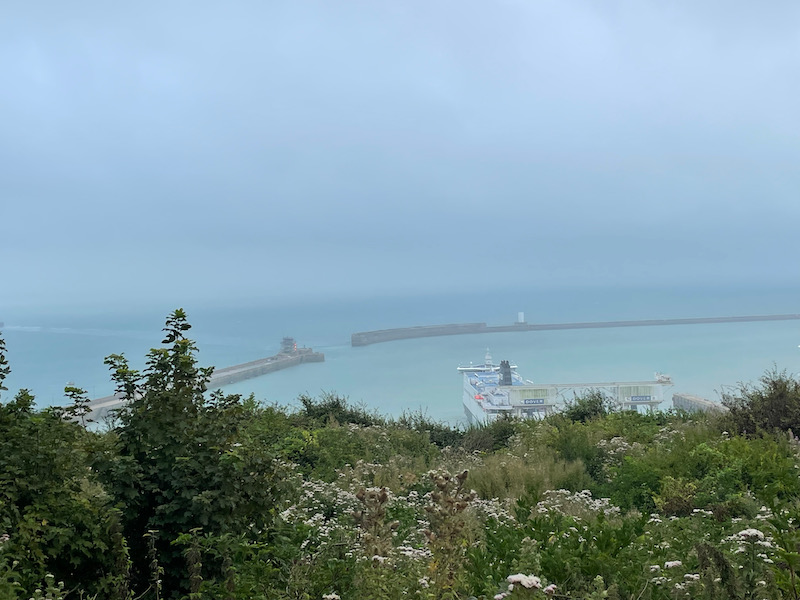
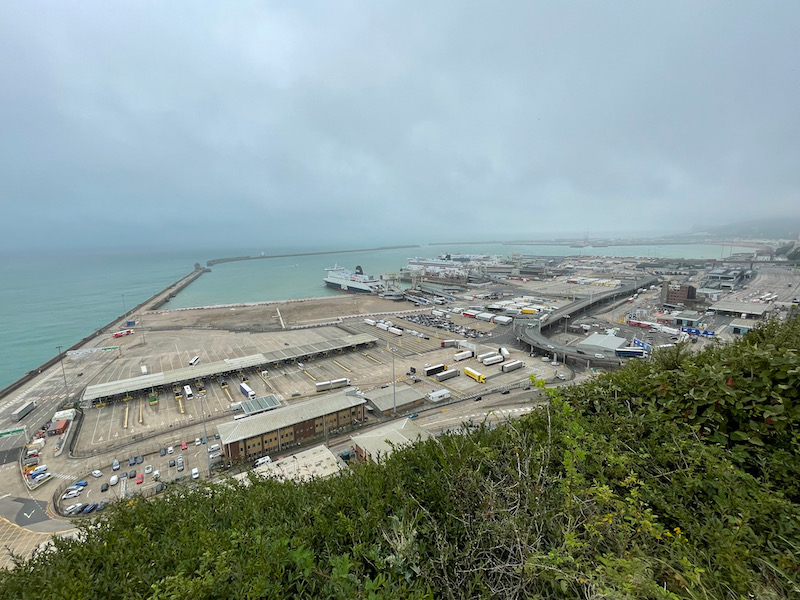
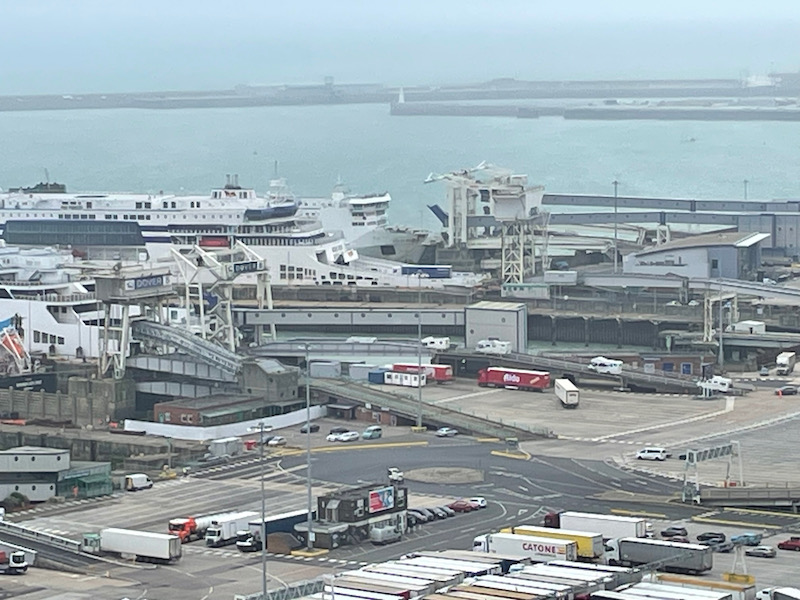
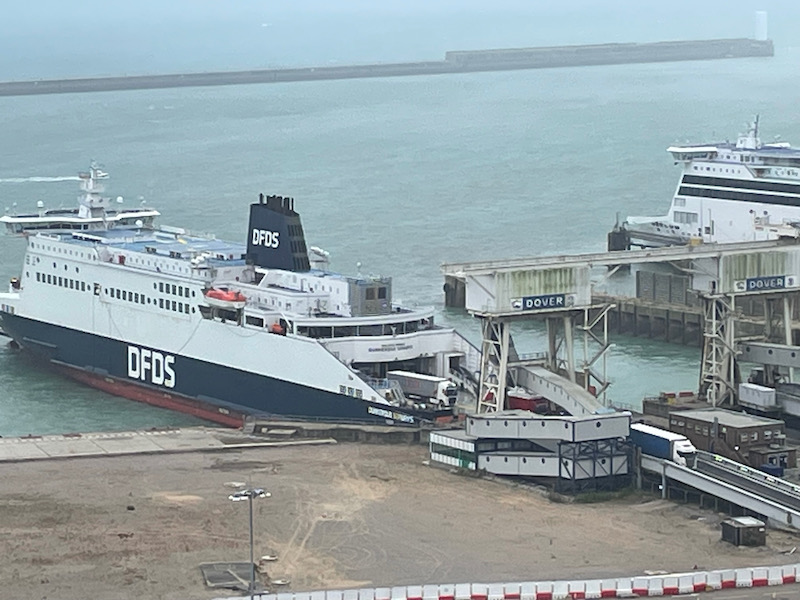
You can see some of the white cliffs just above the ferry terminal, and then they are easily visible from the top of the cliff in various places.
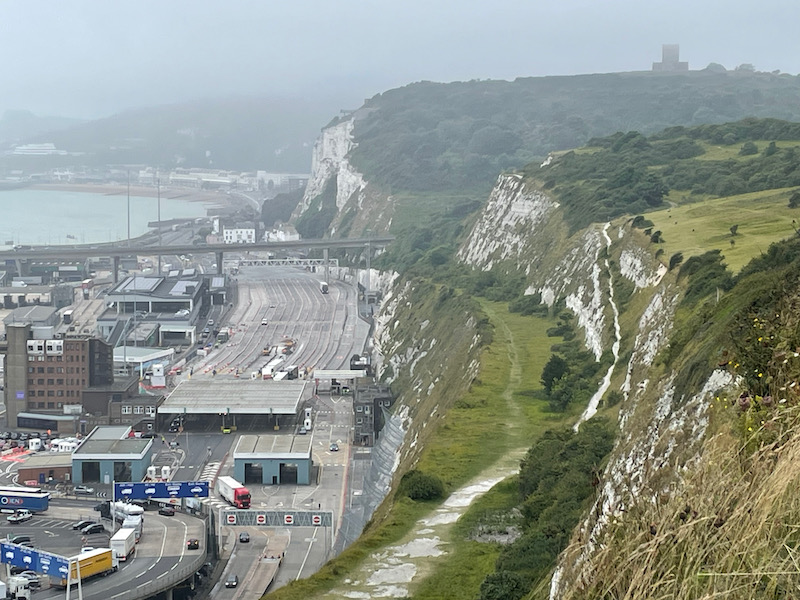
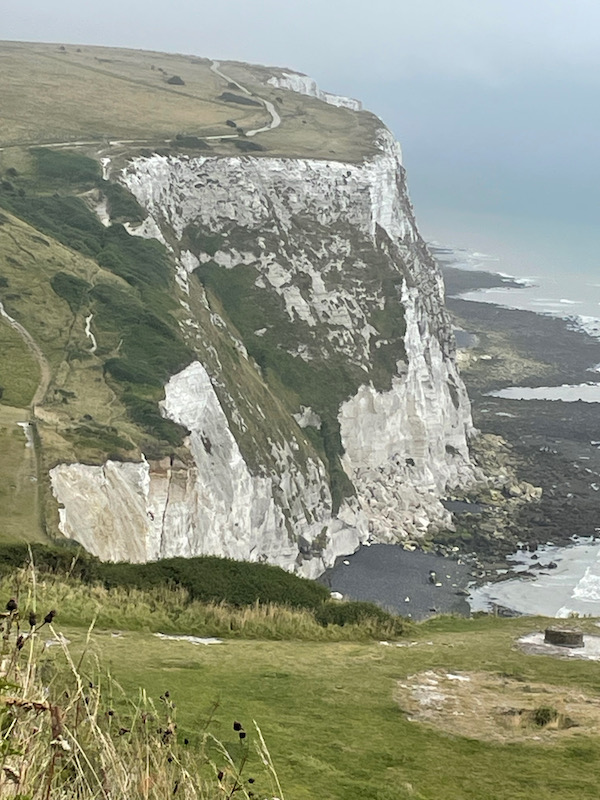
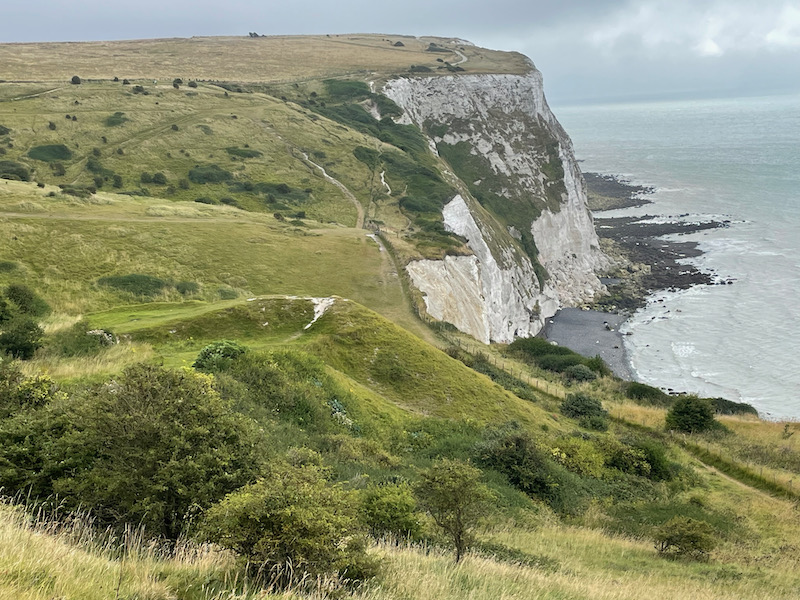
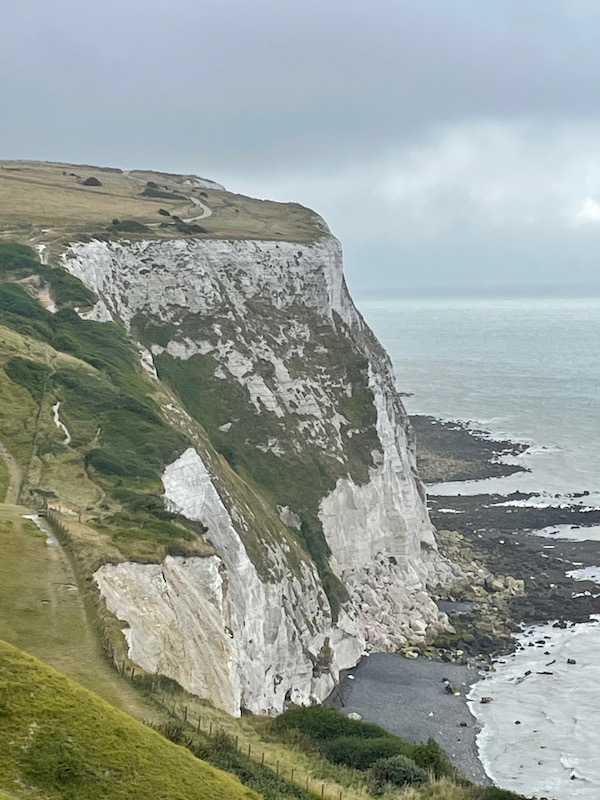
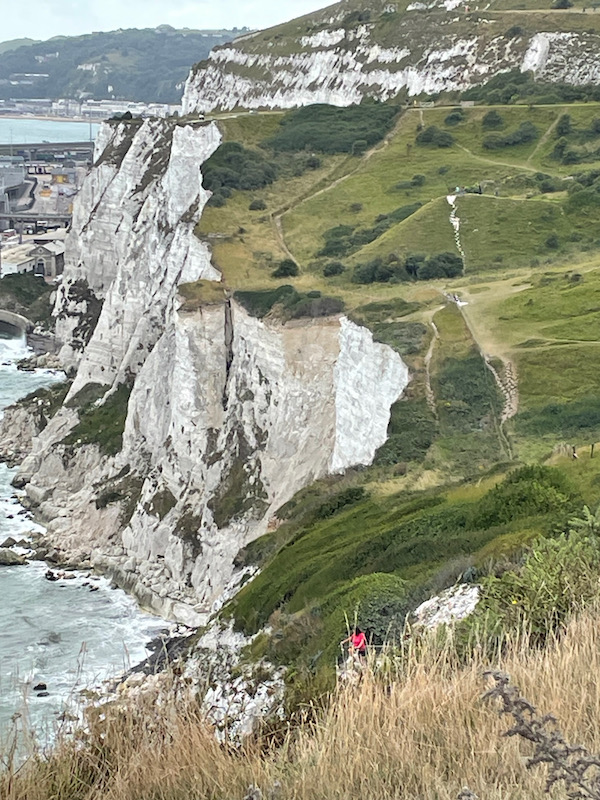
A few pictures of Lucy in a couple places along the cliffs. She is a little tired ... it was a fairly long walk and we found a place where we could play with the ball without fear of her running off the edge of the cliff.


While we didn't go to Dover Castle itself, we were able to see it in the distance from the cliffs. It was founded in the 11th century and has been described as the largest castle in England, a title also claimed by Windsor Castle. The Romans also had something here, since there is a 2nd-century Roman lighthouse here that was later converted into a bell tower for a church. We stopped by the gate after the walk to see if we could just walk around, but we would have had to buy tickets (at £30 each). I also tried to grab a few pictures from town.
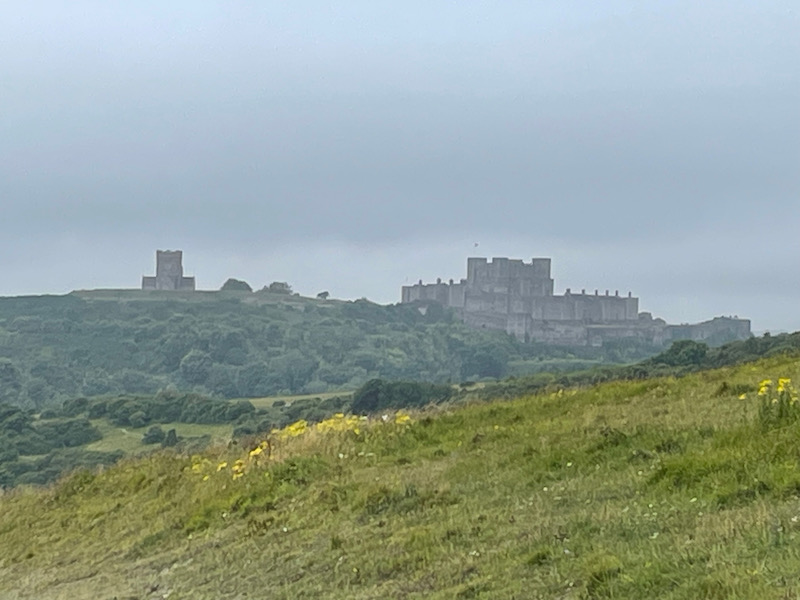
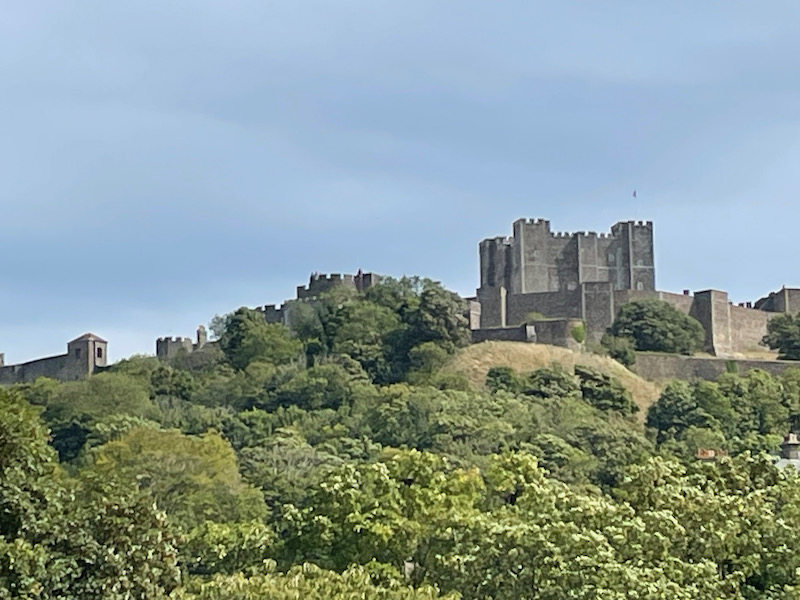
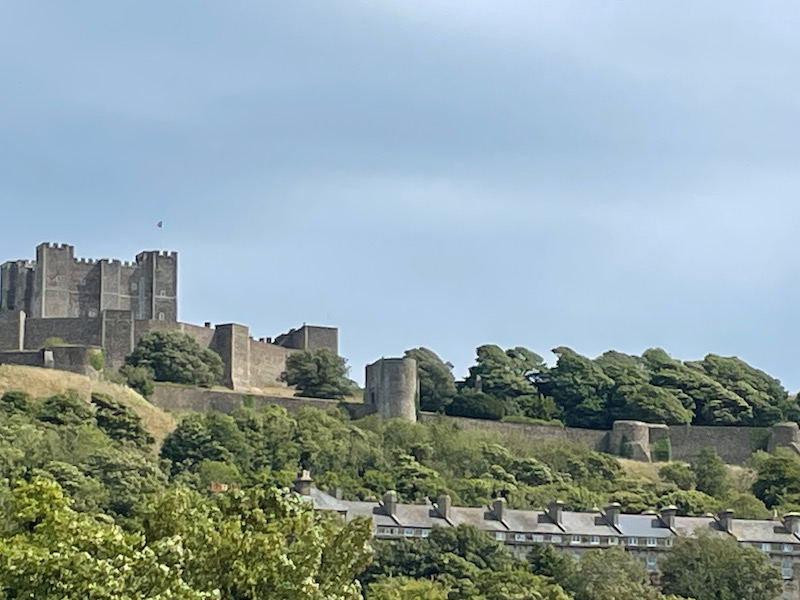
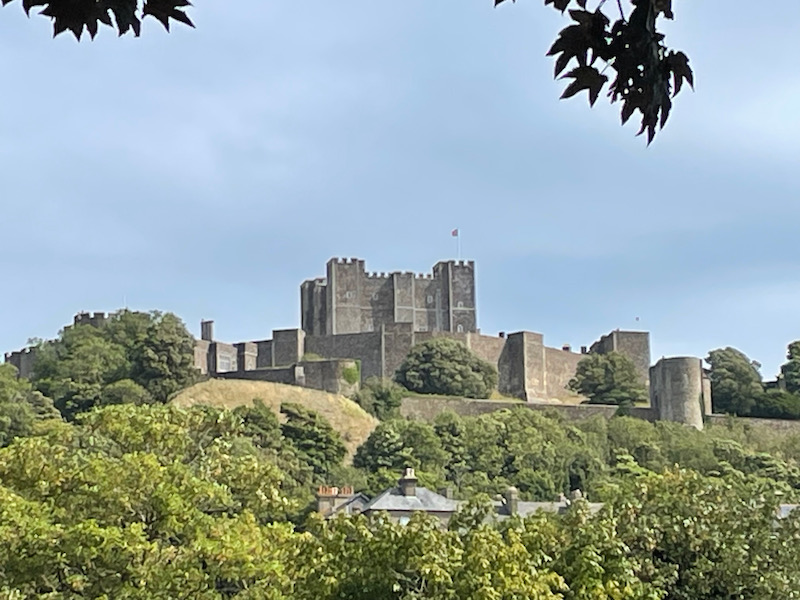
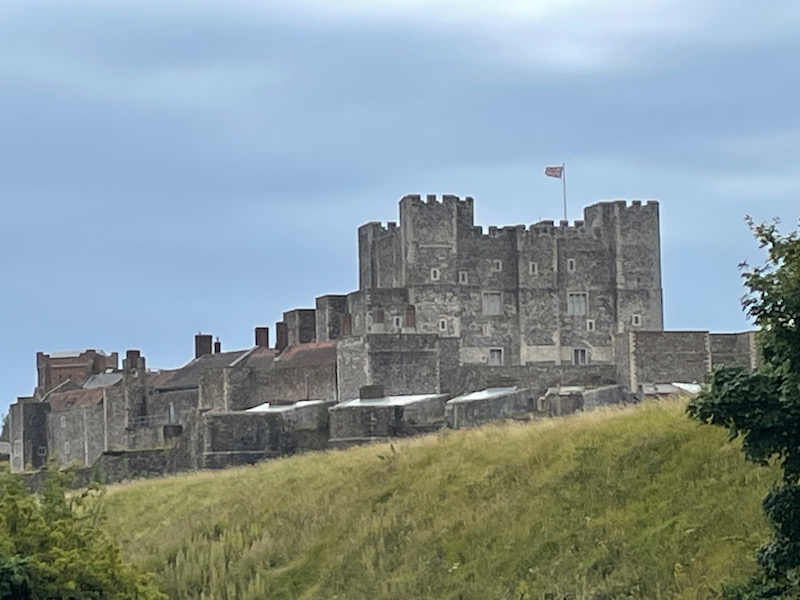
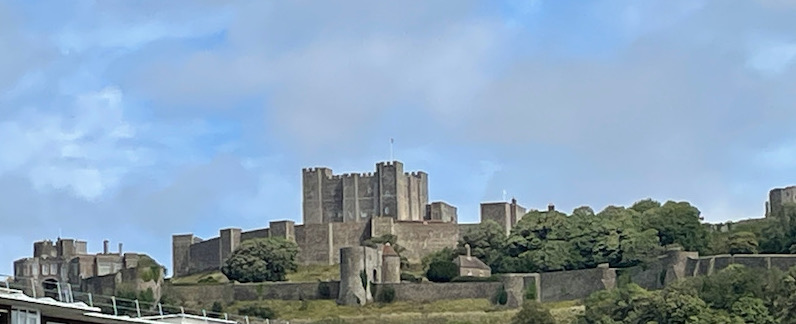
Then back down to the town. The history of the town of Dover begins back in the Stone Age, when people crossed what was then a land bridge before the opening up of the English Channel. The Romans established Portus Dubris (Roman Dover). There is an extremely well-preserved Roman Mansion but it is closed for repairs until April 2025. As you can imagine, there was quite a bit of bombing during WWI and WWII (especially WWII). A series of caves and tunnels in the cliffs were used as air-raid shelters during the war.
We really didn't spend much time in Dover as it was less interesting than we expected it would be. Like many "port" cities, it seemed a dodgy at times. We parked right next to St Mary's Church, although you only get 1 picture because it seemed to have working going on inside and we couldn't find an open door even though there was a sign that said it was open. The parish church of St. Mary was mentioned in the Domesday Book of 1086 so we know there was a church here at that time. Unfortunately, from 1843-1844 much of the medieval building was demolished as the foundations had become unsafe and it was rebuilt in Victorian Gothic style.
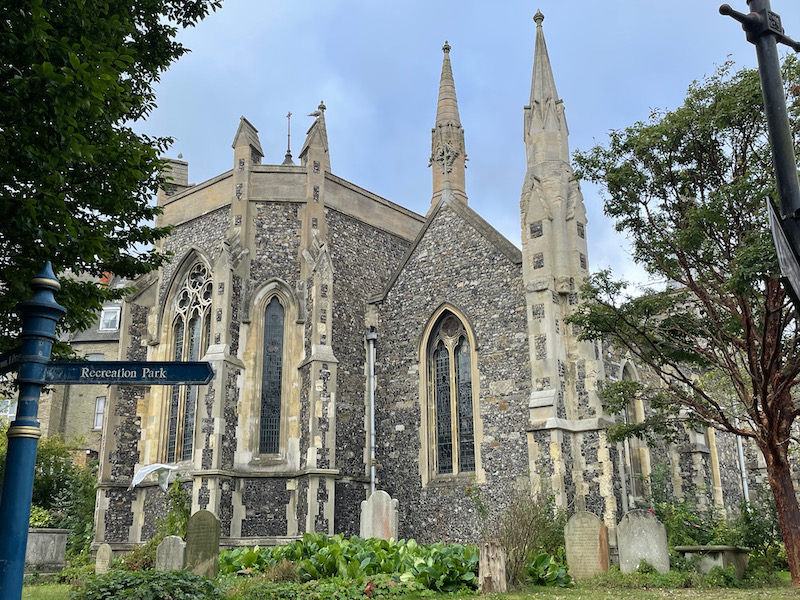
Next to the town hall is the Dover War Memorial, unveiled in 1924. It symbolizes gratitude to the fallen and sympathy for the bereaved. You can see the covered scaffolding behind it, which is foreshadowing of our next stop.
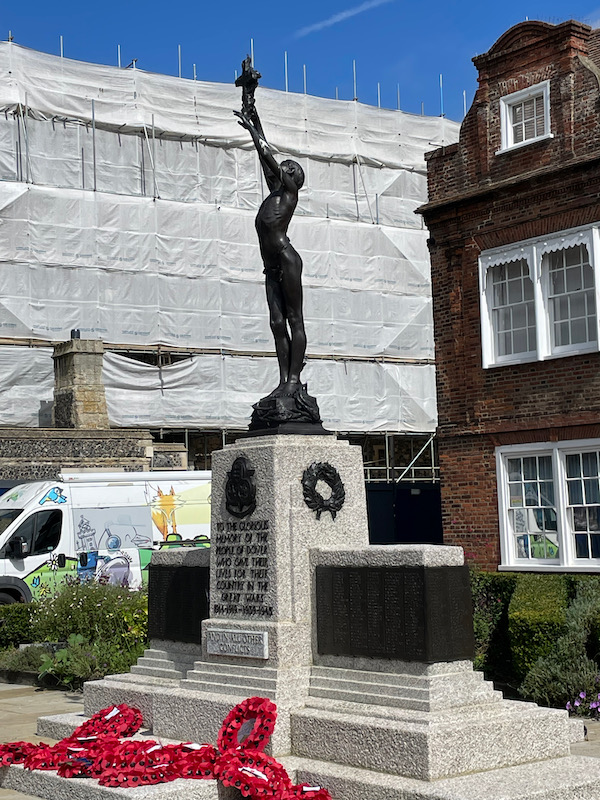
I was writing up our walking tour and it said that the Dover Town Hall was under scaffolding, but we were hoping that the work had been completed by the time we arrived. No such luck ... much of the front and one side was totally covered. This building, opened in 1883, is designed in the Gothic revival style.
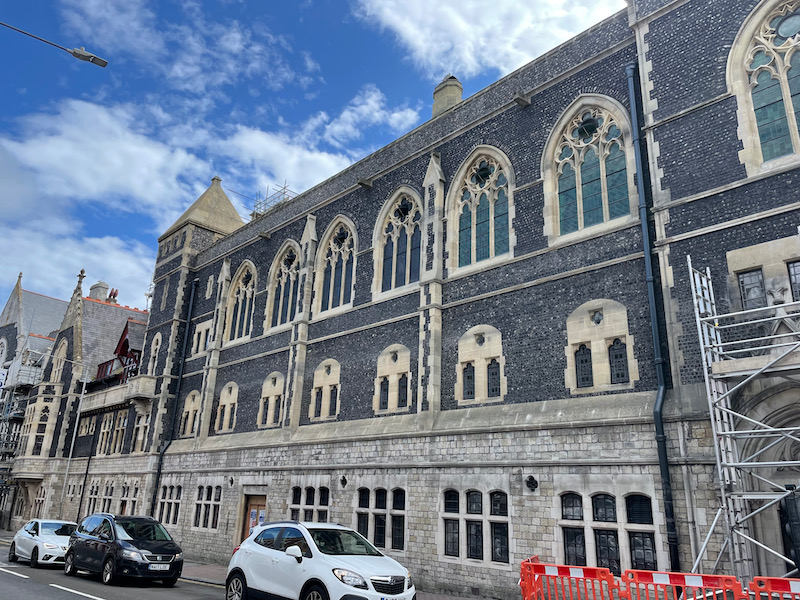
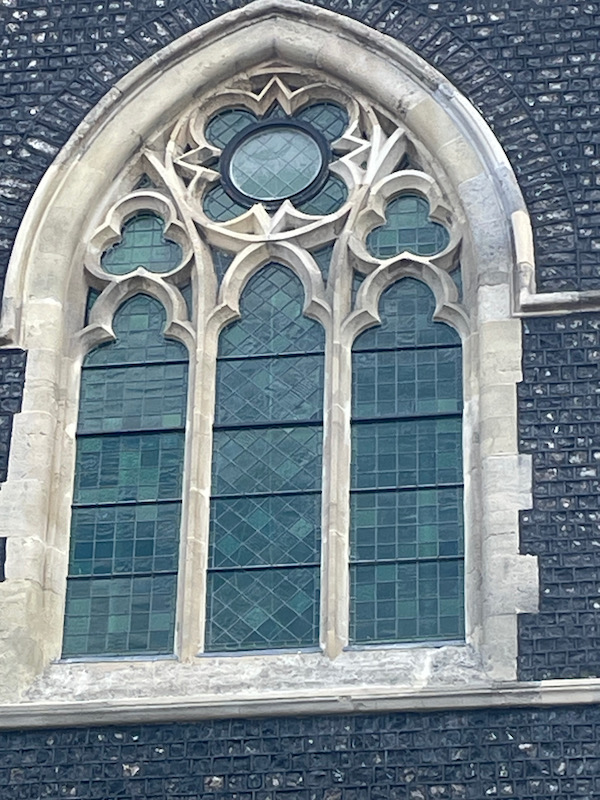
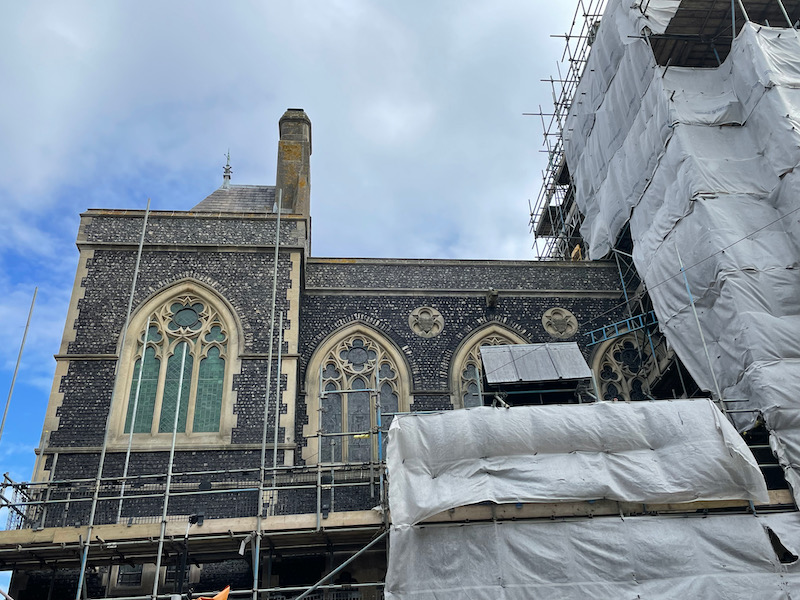
St Edmund's Chapel is probably the smallest church in England in regular use. Built as a cemetery chapel for the Maison Dieu (which is now where the Town Hall is), it was dedicated to St. Edmund of Abingdon, Archbishop of Canterbury and consecrated in 1253. It is the only religious building consecrated by one English saint in honor of another English saint. After its suppression it was put to various uses until 1965 when, threatened with demolition, it was purchased privately and beautifully restored by 1968.
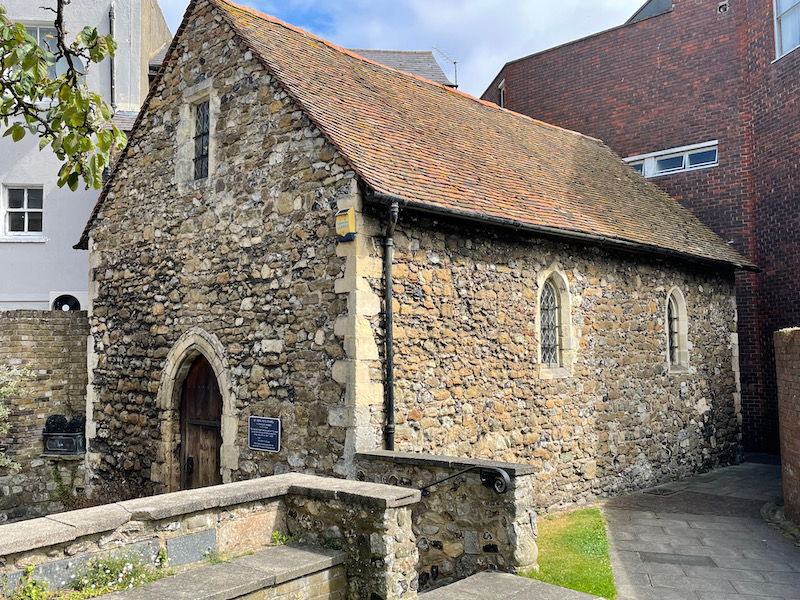
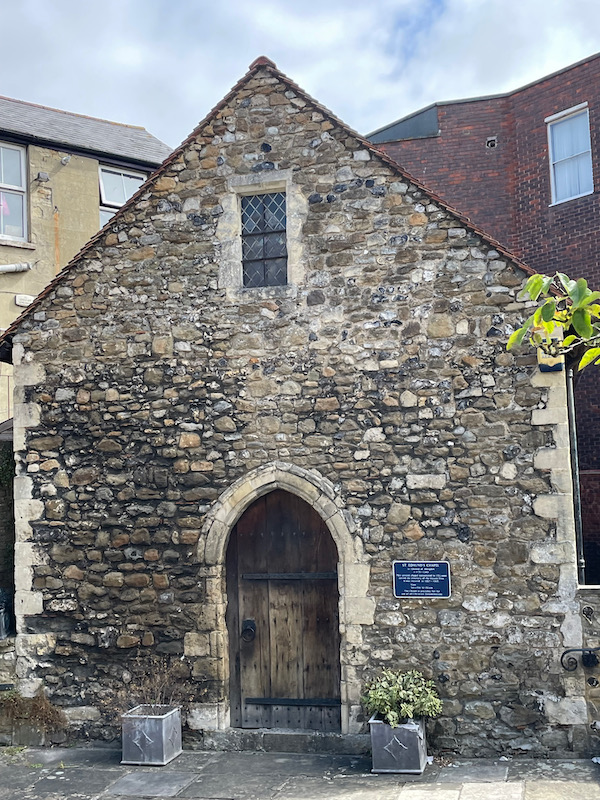
This is one of the buildings of the former St. Martin’s Priory, which is now Dover College. The word "college"' here is not a university, but rather, this is a private school for students from 3 years old to 18 years old.
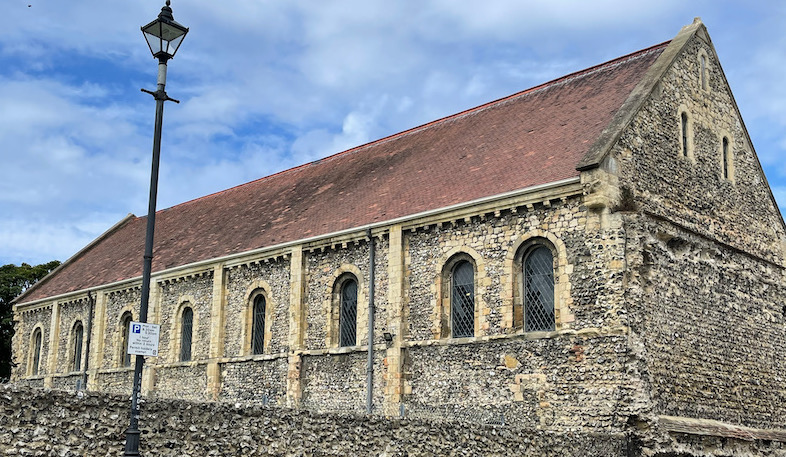
The Clock Tower, near the entrance to the Prince of Wales Pier, is one of Dover’s landmarks. Originally built in the 1870s, it was demolished and rebuilt in 1891. The story of the clocks goes back to the early part of the 19th century. You can tell that they are doing a lot of work here to try to revitalize this area, with a bunch of food trucks there during the day and a local microbrewery.
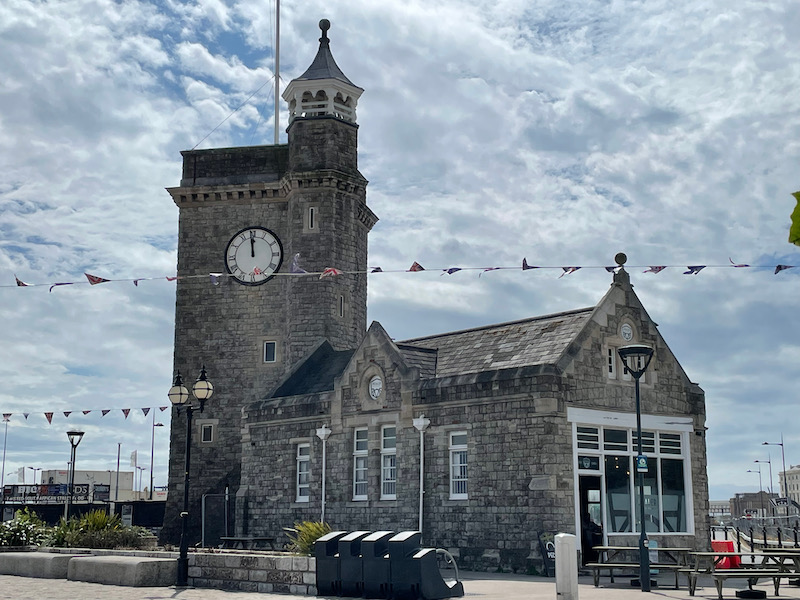
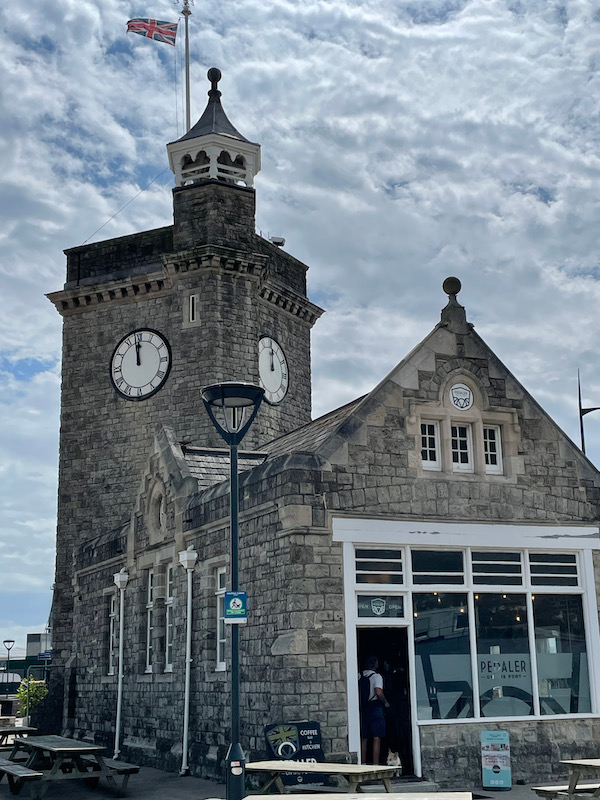
We found a puppy-friendly place for lunch called La Salle Vert and, well, puppy-friendly is almost an understatement. They had a "real" puppuccino. Lucy gets Puppuccino's from Starbucks every now and then, which is just whipped cream. This with whipped cream and more ... Lucy was in heaven!
